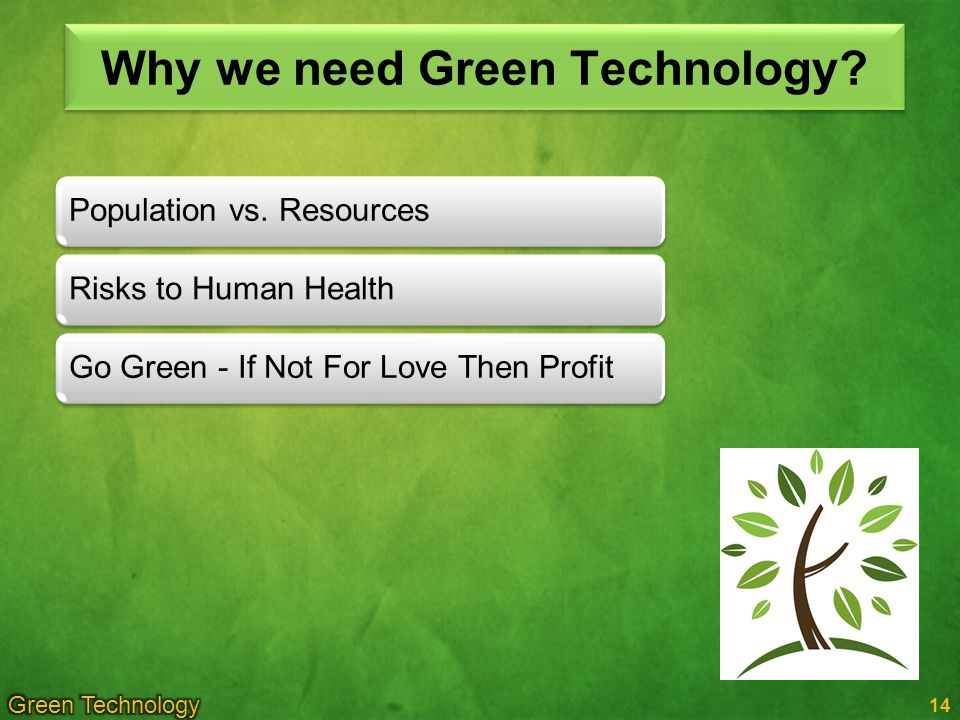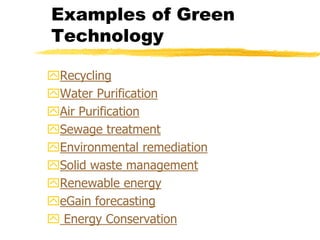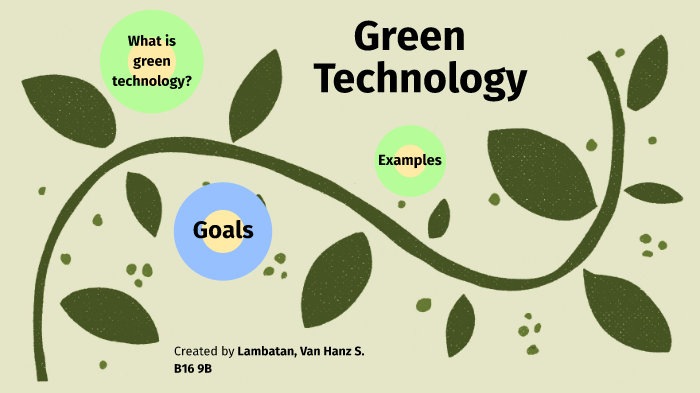Green technology, also known as clean technology or sustainable technology, refers to the use of scientific and technological innovations to protect the environment and natural resources while meeting the needs of society. Green technology aims to reduce the negative impact of human activities on the planet, including climate change, air and water pollution, and the depletion of natural resources. There are many examples of green technology, including renewable energy sources, energy-efficient buildings and appliances, and sustainable transportation.
One of the most well-known examples of green technology is renewable energy sources. Renewable energy refers to energy sources that are replenished naturally and do not deplete or run out, such as solar, wind, hydro, and geothermal energy. These sources of energy produce electricity with minimal or no carbon emissions, which helps to reduce greenhouse gases in the atmosphere and mitigate the impacts of climate change. Solar panels, wind turbines, and small hydroelectric dams are all examples of renewable energy technology that can be used to generate electricity in a sustainable way.
Energy-efficient buildings and appliances are another example of green technology. These technologies are designed to use energy more efficiently, reducing the amount of energy needed to power homes and businesses. Energy-efficient buildings often use advanced insulation, high-performance windows, and energy-efficient lighting and appliances to reduce energy consumption. Energy-efficient appliances, such as LED light bulbs and Energy Star certified appliances, use less energy to perform the same functions as traditional appliances, reducing the amount of energy needed to power homes and businesses and lowering greenhouse gas emissions.
Sustainable transportation is another important aspect of green technology. Transportation is a major contributor to greenhouse gas emissions, and sustainable transportation technologies aim to reduce these emissions while still meeting the mobility needs of society. Electric vehicles, hybrid vehicles, and public transportation systems that use renewable energy sources are all examples of sustainable transportation technologies. These technologies can significantly reduce the environmental impact of transportation and improve air quality in urban areas.
In conclusion, green technology refers to the use of scientific and technological innovations to protect the environment and natural resources while meeting the needs of society. There are many examples of green technology, including renewable energy sources, energy-efficient buildings and appliances, and sustainable transportation. By adopting these technologies, we can significantly reduce our impact on the environment and work towards a more sustainable future.


:max_bytes(150000):strip_icc()/go_green_stamps-56a9aa633df78cf772a9562d.jpg)





